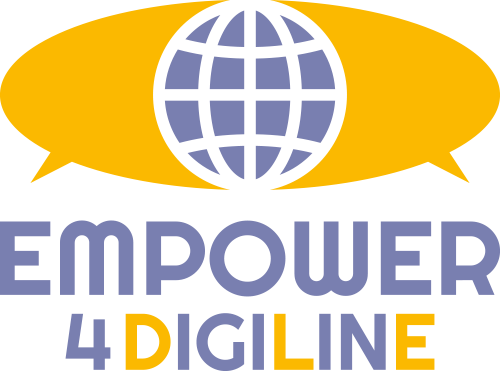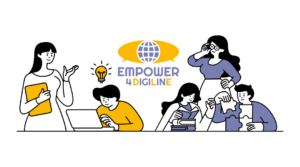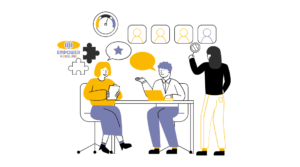One of our goals in the EMPOWER project is also to strengthen the digital resilience and overall media literacy of teachers and, of course, learners. In the constantly evolving landscape of language teaching, the integration of digital tools and media literacy has become paramount. As language learners navigate the digital world to acquire new skills, the concepts of digital resilience and media literacy play a central role. In this blog post we look at the importance of these concepts for language teaching and explore how they can be developed and strengthened.
But first, let’s look at the terms: What do digital resilience and media literacy mean?
Digital resilience is the ability to adapt, recover and cope with digital challenges and adversity with confidence. It includes skills such as problem solving, critical thinking and cyber awareness that are essential for navigating the complex digital world. Media literacy refers to the ability to critically analyse, evaluate and effectively shape media content. These two factors enable language learners to use digital resources, communicate competently in online environments and assess the credibility of online information.
Especially for people who want to learn something new online, such as a language, it is important to address digital resilience so that they are not overwhelmed. But language teachers also need to ensure that they can navigate the complex digital world and expand their options by exploring new tools, without abandoning concepts that work well. For example, to promote digital literacy, you as a language teacher could work with your learners in a teaching unit on digital tools. Look together at language learning apps or appropriate dictionaries that can be used to supplement lessons. In these teaching units you should also emphasise the protection of personal data and how to handle their data when using online tools. As a language teacher, you should be aware that you can only use students’ data that is appropriate for use. If you are unsure, read the privacy policies of the tools or ask the person responsible for data protection in your company. This will also help you as a teacher to be a responsible user of the digital world. You can also include aspects that promote resilience or make learners aware of them. Always include group exercises or provide space for participants to network and build (learning) relationships. At the beginning, set small and achievable goals for the common learning units and the individual needs of your learners. But also point out that your learners should take time for short breaks or time-outs from digital learning tools. Encourage learners to set their own time limits for using applications and to set aside fixed study times in their daily lives. In your sessions, talk openly about setbacks and barriers to language learning. Make it clear that any successes or problems that arise can be discussed in the group or one-to-one and are crucial to learning success.
You can also use language teaching to develop media literacy, which is essential for navigating the digital environment. Continue to set priorities in units and analyse digital media content in the new language with learners. Work with them to develop strategies for identifying misinformation in, for example, news reports or videos, including in the new language. Focus on small projects within the units that promote digital literacy. Learners can complete small tasks such as creating a blog or an online presentation. Also compare media content in the target language with learners to broaden their perspectives.
By incorporating strategies for building digital resilience and media literacy into language teaching, you can empower learners to navigate the digital landscape safely, communicate effectively in online environments, and harness the full potential of digital resources for language learning and beyond. But the same rules and suggestions also apply to you as a language teacher. Don’t be overwhelmed by digital diversity. Use proven tools, have confidence in your teaching skills, and pick and choose the ones you feel comfortable with and can easily integrate into your daily routine. Watch webinars or browse YouTube videos to start improving your digital skills. It doesn’t have to be a paid course or even a series of training sessions.
Picture: Freepik







